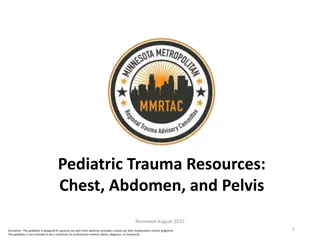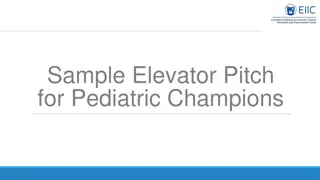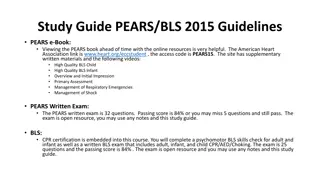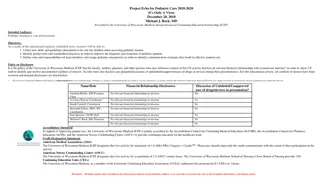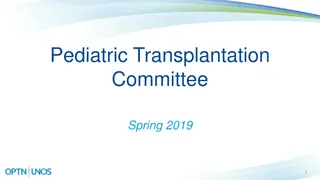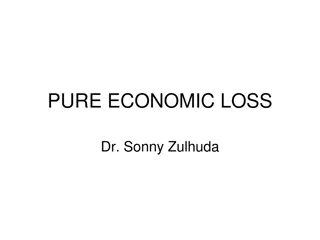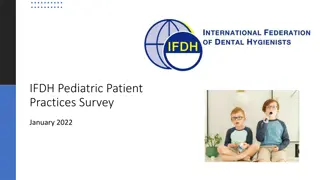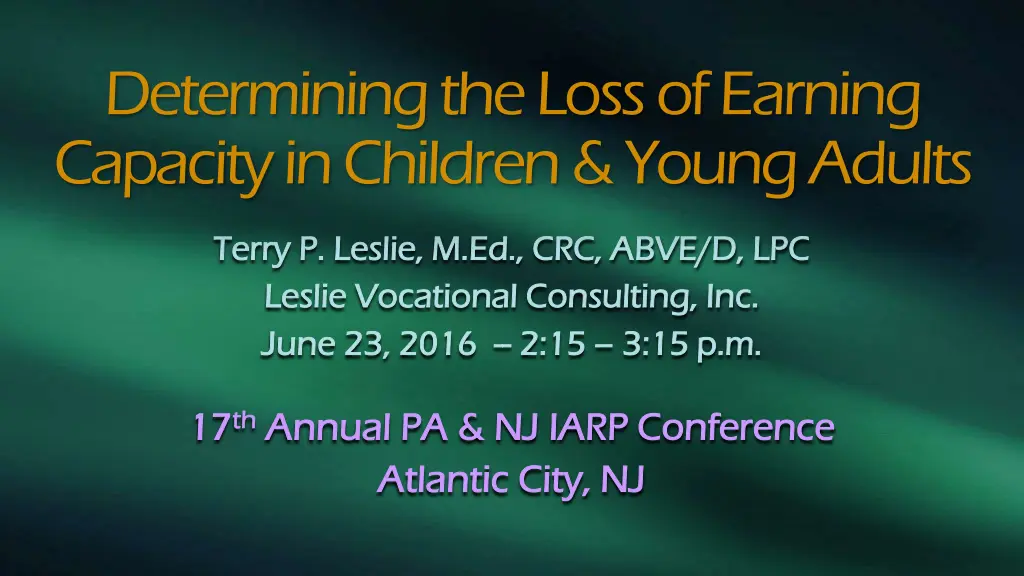
Loss of Earning Capacity in Children and Young Adults: Impact Factors Explored
Explore the factors contributing to the loss of earning capacity in children and young adults, including birth injuries, accidents, trauma, environmental exposure, and more. Methods like RAPEL and PEEDS are discussed, emphasizing the importance of educational attainment and family influence in shaping future prospects.
Download Presentation

Please find below an Image/Link to download the presentation.
The content on the website is provided AS IS for your information and personal use only. It may not be sold, licensed, or shared on other websites without obtaining consent from the author. If you encounter any issues during the download, it is possible that the publisher has removed the file from their server.
You are allowed to download the files provided on this website for personal or commercial use, subject to the condition that they are used lawfully. All files are the property of their respective owners.
The content on the website is provided AS IS for your information and personal use only. It may not be sold, licensed, or shared on other websites without obtaining consent from the author.
E N D
Presentation Transcript
Determining the Loss of Earning Capacity in Children & Young Adults Terry P. Leslie, M.Ed., CRC, ABVE/D, LPC Terry P. Leslie, M.Ed., CRC, ABVE/D, LPC Leslie Vocational Consulting, Inc. Leslie Vocational Consulting, Inc. June 23, 2016 June 23, 2016 -- -- 2:15 2:15 3:15 p.m. 3:15 p.m. 17 17th thAnnual PA & NJ IARP Conference Annual PA & NJ IARP Conference Atlantic City, NJ Atlantic City, NJ
Introduction Birth Injuries Motor Vehicle Accidents Trauma-amputations, Explosions, Foster Care Abuse Environmental Exposure Mercury, Lead Paint, Medication Errors Death By Falling, Motor Vehicle Accidents, Drowning
RAPEL Method R = Rehabilitation Plan A = Access to the Labor Market P = Placeability E = Earning Capacity L = Labor Force Participation
PEEDS Method P = Parental / Family Occupations E = Educational Attainment E = Evaluation Results D = Developmental State S = Synthesis
Sphere of Influence (SOI) Over 50% of children born to millennials are outside of marriage Over 75% of African-American children are born outside of marriage Sphere of influence may include: Biological parents Biological grandparents Foster parents Half-siblings Aunts/Uncles Teachers/Coaches
Educational Attainment Head Start Standardized testing Teacher s observations Grades Educational attainment of individuals in the Sphere of Influence Behavioral observations/suspensions Why someone discontinued their education either plaintiff or SOI
The Occupations of the Individuals in the Sphere of Influence Not only their occupations, but also their earnings Socio-economic status of individuals in the SOI Children from low SES environments acquire language skills more slowly, exhibit delayed leger recognition and phonological awareness, and are at a risk for reading difficulties (Aikens & Barbarin, 2008) Children with higher SES backgrounds were more likely to be proficient on tasks of addition, subtraction, ordinal sequencing and math word problems than children with lower SES backgrounds (Coley, 2002)
The Occupations of the Individuals in the Sphere of Influence (cont d) Students from low-SES schools entered high school 3.3 grade levels behind students from higher SES schools. In addition, students from the low-SES groups learned less over 4 years than children from higher SES groups, graduating 4.3 grade levels behind those of higher SES groups (Palardy, 2008). In 2007, the high school dropout rate among persons 16-24 years old was highest in low-income families (16.7 percent) as compared to high-income families (3.2 percent) (National Center for Education Statistics, 2008) Children from lower SES households are about twice as likely as those from high-SES households to display learning-related behavior problems. A mother s SES was also related to her child s inattention, disinterest, and lack of cooperation in school (Morgan et al., 2009)
Functional Limitations of the Child Are there functional limitations which would have been in effect regardless of the event which is the focus of the limitation? Congenital birth defects regardless of birth trauma Sickle Cell Disease
Evaluation Results of the Child Functional testing Achievement testing Adaptive behavior testing Psychological evaluations
What is the Childs Pre and Post-disability Earning Capacity?
Labor Force Participation / Worklife Expectancy


